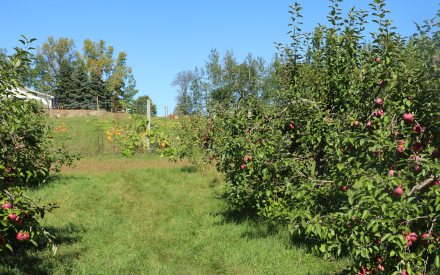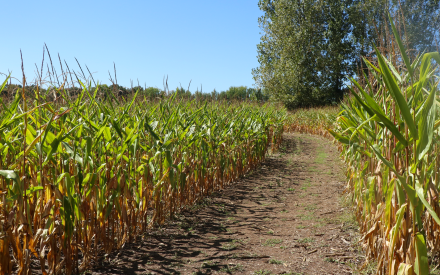Understanding the importance of making events, festivals, and agritourism more accessible is crucial. Accessibility ensures that everyone, regardless of their abilities, can participate fully. By removing physical, sensory, and communication barriers, events become more inclusive and foster a sense of belonging for all attendees. Promoting accessibility contributes to social equity by ensuring that people with disabilities have equal opportunities to engage in cultural, recreational, and educational activities. Ensuring your event is accessible isn’t just about legal compliance; it’s about creating a more equitable and enriching experience for everyone involved.
At some point in their lifetime, 70% of all Americans will have either a temporary or permanent disability. In 2022, 12.5% of Wisconsinites reported that they have a disability with 29% of Wisconsinites over 65 years old reporting that they have a disability. An individual with a disability is defined by the Americans with Disabilities Act as a person who:
- Has a physical or mental impairment that substantially limits one or more major life activities
- Has a history or record of such an impairment
- Is perceived by others as having such an impairment
The ADA does not list the impairments that are covered. There is a diverse range of disabilities that extend beyond physical disabilities and disabilities that are visible. It is important to consider a wide range of disabilities and understand that disabilities also vary in severity.
Goals for creating accessibility
The goal for creating an accessible event, festival, or agritourism site should be proactive, not reactive when a situation arises.
- Use Universal Design concepts and principles to make the event welcoming and accessible to all attendees
- Review your site or event using an accessibility checklist (.docx download)
Universal Design
Universal Design is the creation of products and environments meant to be usable by all people, to the greatest extent possible, without need for adaptation or specialization. The primary focus of Universal Design has revolved around elements of the home and development of user-friendly products. Many homes, offices, and public buildings have undergone simple transformations that enable access to all persons. This re-design of an environment can range from small gadgets to extensive transformations.
Universal Design can be utilized in all areas of event, festival, and agritourism planning. The goal of using Universal Design concepts is not to entirely redesign the space, but to make a range of changes that result in the event being a comfortable, user-friendly, safe place for participants to enjoy.
Guide
Use this guide to create an accessible, inclusive agricultural event for everyone, including people with disabilities.
Inform
- Provide contact information for the person who will answer accessibility questions on the website, marketing, and/or promotional information
Reserved parking spaces – post signs for accessible parking
- Spaces should be close to the (accessible) entrance, near a safe walkway, and free of debris
- You need 1 accessible parking space for every 25 non-accessible spaces
Walkways
- Smooth or even surface, not slippery
- Free of debris or barriers on the path (protruding from sides, or hanging from above)
- 36” wide path of travel (can reduce to 32” for entry ways)
- 60” diameter if turnaround is needed
Entrances & ticket booths
- Ramps (1” rise for 12” run)
- Any thresholds (usually in doorways) should not exceed ½” in height
- Ticket and retail counters a maximum of 36” above the floor
Restrooms
- Permanent accessible restrooms: 1 accessible stall per bathroom
- Temporary restrooms: Rent 1 or more accessible portable bathrooms – depending on the size of the event
Signage & communication
- Wording on signs should be as simple as possible. Additionally, you could add:
- Pictures (e.g., a picture of a pumpkin and an arrow) to increase accessibility for a variety of audiences, including those with difficulty reading English
- QR codes that lead to an audio version of the sign
- Portable microphones for tour guides or presenters
During the event
- Designate seating space for wheelchair users and individuals with mobility disabilities:
- Include companion seating next to reserved seating (usually 1-2 additional seats)
- Staff/volunteers are aware of any known accommodations to be provided
- Staff/volunteers know location of accessible restrooms, parking, and emergency exits
Emergency exits and routes
- Emergency exits must be clearly marked and accessible
- Post signs along the exit route indicating the direction of travel to the nearest exit
- Mark doors or passages that could be mistaken as an exit route
Additional information related to accommodations can be found in the article, “Responding to accessibility issues and requests for accommodations for your agritourism event.”
Examples of incorporating Universal Design into an Agritourism venue can be found in the article, “Universal design examples for Agritourism events”.
Adapted from materials created by Ohio AgrAbility – Making events, fairs, and agritourism accessible

 Responding to accessibility issues and requests for accommodations for your agritourism event
Responding to accessibility issues and requests for accommodations for your agritourism event AgrAbility: Here to Keep You Farming
AgrAbility: Here to Keep You Farming Universal design examples for agritourism events
Universal design examples for agritourism events


